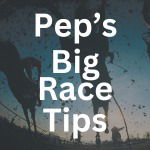Horse Racing Grades, Groups, and Classes – The Complete Guide

If you’re new to horse racing, it’s easy to get overwhelmed by the different terminology. For example, the classification system, designed to ensure more evenly contested races, is a source of genuine bemusement for many beginners.
According to the British Horseracing Authority, there are approximately 14,000 horses in training in the United Kingdom. As you can imagine, there is a substantial difference in ability between horses. Therefore, it was essential for the BHA to develop a system to rate each horse. The result is a classification system that uses handicap ratings.
The BHA uses a team of experts called handicappers who analyse horses’ performances to provide a fair and reasonable assessment of their quality. In the United Kingdom, horses are given an Official Rating (OR), which is used to decide which events they can run in and how much weight they should carry. Typically, a horse needs to have run at least three times before it receives an OR.
The BHA created a standardised classification system to group horses into the appropriate races to make things even easier. It does this for National Hunt, Flat, and All-Weather races.
This guide provides a detailed insight into the different horse racing grades, groups, and classes used in British horse racing. It also provides useful statistics relating to the performance of favourites in each class, which may help give you an edge over the bookies.
Hopefully, by the finish, you’ll be an expert on classifications and better understand whether a horse ‘belongs’ in a certain class, group, or grade.
Contents
- Watch The Video!
- Horse Racing Class – How it Works
- Horse Racing National Hunt Classifications
- Horse Racing Flat Classifications and All-Weather Classifications
- Horse Racing Grades, Groups, and Classes in Detail
- Horse Racing National Hunt Classifications
- Horse Racing National Hunt Class 1
- Horse Racing Grade 1
- Horse Racing Grade 2
- Horse Racing Grade 3
- Horse Racing National Hunt Listed Races
- Horse Racing National Hunt Class 2
- Horse Racing National Hunt Class 3
- Horse Racing National Hunt Class 4
- Horse Racing National Hunt Class 5
- Horse Racing National Hunt Class 6
- Flat/All-Weather Horse Racing Classifications
- Horse Racing Flat/All-Weather Class 1
- Horse Racing Group 1
- Horse Racing Group 2
- Horse Racing Group 3
- Horse Racing Flat Listed
- Horse Racing Flat/All-Weather Class 2
- Horse Racing Flat/All-Weather Class 3
- Horse Racing Flat/All-Weather Class 4
- Horse Racing Flat/All Weather Class 5
- Horse Racing Flat/All-Weather Class 6
- Horse Racing Flat/All-Weather Class 7
- Horse Racing National Hunt Classifications
- Where to Find Horse Racing Class on a Racecard
- Prize Money – Another way of considering horse racing class
- Horse Racing Class – The Final Word
Watch The Video!
Horse Racing Class – How it Works
In UK horse racing handicap events, the OR of each runner not only determines what class it runs in but also how much weight it will carry relative to the other horses in the race. The higher the horse’s handicap rating, the more weight it must carry. Each OR point translates to a certain amount of weight.
For instance, 1 OR point equals 1 pound of weight. If a horse has an OR eight points higher than a rival in a race, it must carry eight pounds more than THAT horse in THAT race (not allowing for delayed rating increases and rider claims).
In non-handicap races, each horse carries the same weight, with exceptions sometimes made for female runners competing against males and younger horses. The horse with the highest OR has a distinct advantage in these races and is usually a heavy odds favourite depending on the rating gap. For example, Constitution Hill’s OR was six points clear of his nearest rival, State Man, during the 2023 Champion Hurdle at Cheltenham. Consequently, he began the race as a prohibitive 4/11 favourite and won by nine lengths.
The purpose of handicap races is to theoretically eliminate the advantage of the perceived best horses with their ORs determining where they compete. For instance, you won’t find Constitution Hill running in a Class 3 race at this stage in his career!
Suppose one horse running in flat races has an OR of 47, and another has a rating of 89. Rather than competing in the same race with the stronger horse carrying 42 pounds extra, the horses run in different classes against opponents of similar ability.
The OR used in Flat and All-Weather racing differs from National Hunt ratings, so dividing them when explaining horse racing classes is best.
Horse Racing National Hunt Classifications
National Hunt races are divided into the following classes:
- Class 1 – This is the highest class and is divided into Grades 1, 2, and 3, and Listed races
- Class 2
- Class 3
- Class 4
- Class 5
- Class 6
Horse Racing Flat Classifications and All-Weather Classifications
Flat races are divided into these categories:
- Class 1 – This is the highest class and is divided into Groups 1, 2, and 3, and Listed races
- Class 2
- Class 3
- Class 4
- Class 5
- Class 6
- Class 7
Below, I will provide a more detailed look at each grade, group, and class, outlining the ORs required to enter.
Horse Racing Grades, Groups, and Classes in Detail
Without further ado, let’s investigate the different UK horse racing classifications. I will include data on how favourites perform at each level for added value. Let’s begin with National Hunt racing.
Horse Racing National Hunt Classifications
Technically speaking, the ratings begin at zero, but in National Hunt racing, you won’t find many runners with ORs below 70. Here is more information on each of the NH classifications.
Horse Racing National Hunt Class 1
Races in this class are the pinnacle of the sport and are divided into Grade 1, 2, 3, and Listed events. For the record, here’s how favourites perform in all Class 1 National Hunt races. All the data included in this guide relates to UK races only from January 1, 2020.
| Bets | Wins | Strike Rate | ROI (BF) | P/L (BF) | A/E |
| 606 | 201 | 33.17% | -12.48% | -75.61% | 0.85 |
Blindly backing all of them would result in heavy losses!
Horse Racing Grade 1
These races are the cream of the crop and attract only the very best entrants. For instance, the Cheltenham Gold Cup is a Grade 1 National Hunt race regarded by many as Britain’s most prestigious jumps race. Typically, these races only feature horses with ORs of 150+. In the 2023 Gold Cup, Eldorado Allen and Sounds Russian were the lowest-rated horses with ORs of 161 apiece.
Horse Racing Grade 1 Favourite Stats
| Bets | Wins | Strike Rate | ROI (BF) | P/L (BF) | A/E |
| 119 | 52 | 43.7% | 4.03% | 4.79 | 0.98 |
A small profit from a small sample size tells us little other than the fact that looking at the top of the market is not a bad idea!
Horse Racing Grade 2
These races are just below the pinnacle but still feature high-quality horses due to the large prize fund. Most horses that compete in these events have ORs of 140+ but occasionally, trainers will try their luck with runners they feel have the capacity to improve.
For instance, in the 2023 Novice’s Chase at Cheltenham, Bellatrixsa’s OR was 124. However, although the mare received a seven-pound allowance, she faced an impossible task since she was ranked 31 points behind the favourite and ultimate winner, Gaillard du Mesnil.
Horse Racing Grade 2 Favourite Stats
| Bets | Wins | Strike Rate | ROI (BF) | P/L (BF) | A/E |
| 216 | 79 | 36.57% | -16.66% | -36 | 0.84 |
You won’t get rich backing favourites in these races!
Horse Racing Grade 3
Grade 3 races are further down the pipeline, as horses with relatively low ORs may compete in handicap events. For instance, the 2022 Welsh National was won by The Two Amigos with an OR of just 127. His success was possible because he carried a whopping 27 pounds less than the top-weighted The Big Dog.
Despite its prestige, the Aintree Grand National is also a Grade 3 National Hunt Race.
Horse Racing Grade 3 Favourite Stats
| Bets | Wins | Strike Rate | ROI (BF) | P/L (BF) | A/E |
| 80 | 16 | 20% | 2.72 | 2.18 | 0.95 |
A tiny profit from a low win rate suggests favourites are often available at relatively high prices.
Horse Racing National Hunt Listed Races
Listed events are the lowest grade of Class 1 events in National Hunt racing. Once again, horses with relatively low ORs have a fighting chance of winning in handicap events.
Horse Racing National Hunt Listed Races Favourite Stats
| Bets | Wins | Strike Rate | ROI (BF) | P/L (BF) | A/E |
| 158 | 51 | 32.28% | -15.81% | -24.98 | 0.78 |
The strike rate is okay, but the low A/E figure suggests you’re not getting value for money.
Horse Racing National Hunt Class 2
We now go down the ladder in terms of quality. Class 2 events tend to feature open handicap races featuring horses with ratings up to and including 140. In these events, horses with ORs in the 120s can compete with their higher-rated opponents on a relatively even keel. These are ideal races for improvers that could be capable of competing in Class 1 company.
Horse Racing National Hunt Class 2 Favourite Stats
| Bets | Wins | Strike Rate | ROI (BF) | P/L (BF) | A/E |
| 681 | 223 | 32.75% | -4.12% | -28.01 | 0.95 |
With a 47%-win rate, non-handicap races result in a loss of 2.7%. The strike rate is high enough to give Class 2 favourites a second look and use FMFR.
Horse Racing National Hunt Class 3
Although they are slightly down the pecking order, Class 3 races can produce some high-quality performers. Such events tend to consist of handicap and novice handicap races for horses with ORs of up to 135. Races are divided into 0-120 and 0-135 categories.
Horse Racing National Hunt Class 3 Favourite Stats
| Bets | Wins | Strike Rate | ROI (BF) | P/L (BF) | A/E |
| 1989 | 770 | 38.71% | -0.65% | -12.87 | 0.97 |
The strike rate exceeds 50% in non-handicap races, with a slightly higher loss at 2.85%. Once again, FMFR could pay dividends, and there are plenty of races to choose from during National Hunt season.
Horse Racing National Hunt Class 4
Class 4 events are typically categorized into 0-100 and 0-115 races. Such races may include a combination of up-and-comers and older horses that have lost form and are slipping down the ratings.
Horse Racing National Hunt Class 4 Favourite Stats
| Bets | Wins | Strike Rate | ROI (BF) | P/L (BF) | A/E |
| 4655 | 1886 | 40.52% | -2.86% | -132.93 | 0.94 |
For Class 4 races, the strike rate increases to over 48% in non-handicap races. However, blindly backing such horses would result in a loss of 3.42%, indicating that the bookies price such horses accordingly.
Horse Racing National Hunt Class 5
Class 5 races are generally the lowest level of handicap racing in National Hunt. Such events are divided into 0-85 and 0-95 categories. You may see a few horses that once competed in much higher grades but are now at the tail end of their careers.
Horse Racing National Hunt Class 5 Favourite Stats
| Bets | Wins | Strike Rate | ROI (BF) | P/L (BF) | A/E |
| 2864 | 950 | 33.17% | -1.76% | -50.39 | 0.94 |
The strike rate increases to over 39% with non-handicap favourites, and you would enjoy a small profit of 0.1% from backing the 790 runners blindly.
Horse Racing National Hunt Class 6
The lowest level of National Hunt racing normally consists of young horses that have yet to achieve an official rating. Such races may include Hunter’s Steeplechases and NH Flat races. As the name suggests, flat races don’t have any hurdles or fences. Trainers use these races to give horses experience on a racecourse before they start their jumps careers.
Horse Racing National Hunt Class 6 Favourite Stats
| Bets | Wins | Strike Rate | ROI (BF) | P/L (BF) | A/E |
| 59 | 28 | 47.46% | -3.13% | -1.84% | 0.87 |
The sample size is too small to warrant further inspection.
Flat/All-Weather Horse Racing Classifications
Flat and All-Weather classifications are similar to National Hunt with a couple of notable differences. First, Class 1 events are categorized into Group events rather than ‘Grade’ races. Also, there are Class 7 races. That said, such events are rare. Indeed, there hasn’t been a Class 7 race on the Flat since 2019!
It is also important to note that Flat and All-Weather racing ORs are lower than in National Hunt. You may occasionally see horses with a rating of below 30 in certain races, although such runners race out of the handicap and are usually available at very long odds!
In any case, let’s check out the different classifications in Flat and All-Weather racing.
Horse Racing Flat/All-Weather Class 1
Class 1 races are divided into four categories:
- Group 1
- Group 2
- Group 3
- Listed
In each case, you can expect horses with ORs of 110+ competing.
Before I go any further, here is the performance of favourites in all UK Class 1 Flat races since January 2020.
Horse Racing Flat Class 1 Favourite Stats
| Bets | Wins | Strike Rate | ROI (BF) | P/L (BF) | A/E |
| 717 | 255 | 35.56% | -4.29% | -15.04 | 0.9 |
Backing all Class 1 favourites blindly leads to a fairly small loss.
Horse Racing All-Weather Class 1 Favourite Stats
| Bets | Wins | Strike Rate | ROI (BF) | P/L (BF) | A/E |
| 73 | 27 | 36.99% | 0.43% | 0.31 | 0.93 |
There are very few Class 1 AW races, so the following Group stats relate to Flat racing only.
Horse Racing Group 1
Group 1 racing is where the big money is, with the five Classics the best-known affairs. What’s interesting is that horses can win such events without sky-high ratings. For instance, Coroebus won the 2000 Guineas in 2022 with an OR of 115. The favourite, Native Trail, had the highest rating with 122 but finished second.
Horse Racing Group 1 Favourite Stats
| Bets | Wins | Strike Rate | ROI (BF) | P/L (BF) | A/E |
| 103 | 42 | 40.78% | 5.59% | 5.76 | 0.97 |
Horse Racing Group 2
Group 2 events are also highly anticipated races, with the Sandown Mile and Duke of York Stakes attracting some of the world’s best horses. Highfield Princess took the 2022 Duke of York event with an OR of just 104.
Horse Racing Group 2 Favourite Stats
| Bets | Wins | Strike Rate | ROI (BF) | P/L (BF) | A/E |
| 126 | 42 | 33.33% | -12.11% | -15.05 | 0.82 |
Horse Racing Group 3
Some of the best-known Group 3 races include the Winter Derby and Fred Darling Stakes. Wild Beauty won the latter with an OR of 111 in 2022, but Barbanera managed fourth place despite having a rating of just 93!
Horse Racing Group 3 Favourite Stats
| Bets | Wins | Strike Rate | ROI (BF) | P/L (BF) | A/E |
| 183 | 62 | 33.88% | -3.1% | -5.68 | 0.88 |
Horse Racing Flat Listed
Listed events are just below the main group races, and you’ll likely see some high-quality runners in events such as the Paradise Stakes at Ascot. New Mandate took the prize in 2022 with an OR of 111.
Listed Favourite Stats
| Bets | Wins | Strike Rate | ROI (BF) | P/L (BF) | A/E |
| 305 | 109 | 35.74% | -5.11% | -15.58 | 0.93 |
Horse Racing Flat/All-Weather Class 2
Right below the top tier of flat racing comes Class 2 events, which may include Heritage Handicap races. There are three rating bands to consider:
- 86-100
- 91-105
- 96-110
I should point out at this stage that horses CAN compete in races where the OR band is higher than their rating. However, trainers try to avoid doing this because it places the horse at a major disadvantage.
Suppose a horse is rated 72 on the flat. Such a horse would be more at home in a Class 4 event. In this case, the trainer thinks the horse is capable of more and wants to put them in a Class 3 handicap race where the prize money is better. Yet, such events have a rating band of 76-90. In this scenario, the horse will carry the same weight as any runner with an OR of 76 and is considered four pounds “out of the handicap,” making it tough to compete.
Horse Racing Flat Class 2 Favourite Stats
| Bets | Wins | Strike Rate | ROI (BF) | P/L (BF) | A/E |
| 825 | 237 | 28.73% | -3.53% | -29.13 | 0.9 |
The sample size for non-handicap favourites is too small to draw any conclusions.
Horse Racing All-Weather Class 2 Favourite Stats
| Bets | Wins | Strike Rate | ROI (BF) | P/L (BF) | A/E |
| 331 | 122 | 36.86% | 0.14% | 0.46 | 0.95 |
There are very few Class 2 all-weather events in general, so we can’t get too excited about the above data.
Horse Racing Flat/All-Weather Class 3
The prize money for Class 3 races is usually reasonable, so you may see many talented horses in these events. The rating bands are 76-90 and 81-95.
Horse Racing Flat Class 3 Favourite Stats
| Bets | Wins | Strike Rate | ROI (BF) | P/L (BF) | A/E |
| 924 | 299 | 32.36% | -5.81% | -53.65% | 0.91 |
The sample size for non-handicap favourites is too small to make any major proclamations. However, laying favourites in such races would yield a small profit.
Horse Racing All-Weather Class 3 Favourite Stats
| Bets | Wins | Strike Rate | ROI (BF) | P/L (BF) | A/E |
| 471 | 156 | 33.12% | -14.64% | -68.93 | 0.87 |
Backing favourites blindly in Class 3 AW races is a bad idea!
Horse Racing Flat/All-Weather Class 4
This is the beginning of the lower end of things, with races divided into 66-80 and 71-85 bands.
Horse Racing Flat Class 4 Favourite Stats
| Bets | Wins | Strike Rate | ROI (BF) | P/L (BF) | A/E |
| 2190 | 785 | 35.84% | 1.18% | 25.76 | 0.97 |
Although the win rate increases to 41% in non-handicap races, you’re better served focusing on handicap favourites. Backing them blindly would provide a 4.2% ROI and a 61-unit profit. Therefore, one might argue that it is worth using Class 4 favourites as a foundation for the FMFR method.
Horse Racing All-Weather Class 4 Favourite Stats
| Bets | Wins | Strike Rate | ROI (BF) | P/L (BF) | A/E |
| 1214 | 427 | 35.17% | -4.17% | -50.63 | 0.93 |
The strike rate for the favourite in non-handicap events is 46% for a loss of around 1%, albeit with a small sample size.
Horse Racing Flat/All Weather Class 5
While you may not expect it, future winners of major events sometimes cut their teeth at this level, where they race against old stagers. The rating bands are 56-70 and 61-75.
Horse Racing Flat Class 5 Favourite Stats
| Bets | Wins | Strike Rate | ROI (BF) | P/L (BF) | A/E |
| 2980 | 1118 | 37.52% | -1.42% | -42.28 | 0.94 |
The strike rate for non-handicap favourites rises to 45%, and the ROI loss falls to just 0.07%.
Horse Racing All-Weather Class 5 Favourite Stats
| Bets | Wins | Strike Rate | ROI (BF) | P/L (BF) | A/E |
| 2980 | 1134 | 38.05% | -4.94% | -147.12 | 0.93 |
Almost half of all-weather class 5 races are non-handicap events, and 45% of favourites win. The ROI hardly changes, however.
Horse Racing Flat/All-Weather Class 6
These events were the lowest racing grade for a long time, with rating bands set at 46-60 and 51-65. You’re unlikely to find many future stars at this level, and most of the runners are old horses with dozens of races under their belts.
Horse Racing Flat Class 6 Favourite Stats
| Bets | Wins | Strike Rate | ROI (BF) | P/L (BF) | A/E |
| 1780 | 545 | 30.62% | -2.42% | -43.04 | 0.92 |
The sample size is very small, although it indicates that laying non-handicap favourites might prove useful.
Horse Racing All-Weather Class 6 Favourite Stats
| Bets | Wins | Strike Rate | ROI (BF) | P/L (BF) | A/E |
| 2986 | 913 | 30.58% | -6.16% | -184.05 | 0.9 |
The win rate for non-handicap favourites increases to 37%, and the loss falls to 2%.
Horse Racing Flat/All-Weather Class 7
Horses competing in Class 7 events are at the bottom of the rating scale. Indeed, such events are typically classified stakes races for horses with a maximum OR of 45. As there aren’t many horses with such a low rating, there are relatively few Class 7 events in the UK. For reference, Celerity, a horse that finally won a race on her 106th attempt, still had an OR of 50, although it was as low as 38.
African Blues famously had an OR of just 5 for a race at Bath in April 2008 after finishing 45 lengths behind the winner in a 10-furlong race at Lingfield in December 2006!
Quakeress, who began with an OR of 68, tumbled down the rankings and had a rating of just 16 when he finally won a race at Wolverhampton. Increased to a mighty OR of 22, the horse won again at the same course before finishing in the places in three of his next five races! Despite this impressive run of form, Quakeress’ rating never exceeded 38.
Horse Racing All-Weather Class 7 Favourite Stats
| Bets | Wins | Strike Rate | ROI (BF) | P/L (BF) | A/E |
| 12 | 4 | 33.33% | 19.39% | 2.33 | 1.08 |
Where to Find Horse Racing Class on a Racecard
On the Race Advisor homepage, scroll down to see the full list of race meetings on that day. Click on any one to discover the races taking place on that course. For each event, you’ll see details pertaining to that race at a glance, including:
- Distance
- Number of runners
- Class
- Type of race (Flat, AW, NH, etc.)
The screenshot below shows that the 5f 8y race at Nottingham at 1:30 is a Class 5 Flat Turf Race with nine runners. Furthermore, you can also tell that the total prize money is £7,000; more on the importance of that later.
Click on either the race time or ‘View Racecard’ to see additional details. If the race has finished, the ‘View Results’ tab tells you how it went.
As you can see from above, clicking on a race reveals a treasure trove of information, including:
- The name of each horse and its current Betfair Exchange odds
- The horse’s age and weight being carried
- Each runner’s Official Rating and Days Since the Last Run
- The horse’s trainer and jockey, complete with their win rate within the last 14 days
Furthermore, every horse’s chances are rated via the ‘Horse Most Likely to Win’ metric. In a few seconds, you know that Popular Dream:
- Is marginally the most likely winner at 23%
- Has a trainer, James Tate, with a 33.33%-win rate in the last 14 days
- Has a jockey, Rossa Ryan, with a 24.14%-win rate over the same period
- Is carrying 9-5 with no Official Rating
- Last ran 118 days ago
For more information on the trainer and jockey, click their names.
Race Advisor is a stats geek’s paradise! I clicked on the trainer, James Tate, and found a huge tract of information here.
He has only had six runners in the last 14 days, so his 33.33%-win rate isn’t massively relevant. Perhaps more importantly, he has a decent 39% rating on the “Does J Tate Suit This Race?’ measurement. However, it does appear that he is on a mini-slump regarding improvement.
Scroll down a little to see information on the performance of each Tate runner.
Click on any horse, and you get a similar level of data.
Here, you can see that Caspers Court has been steady recently and scores just over 34% on the Horse’s Strength Metric. The ‘Previous Results Summary’ section shows the number of races and wins over different codes.
Scroll down the page to learn more about Caspers Court’s history. For example, we see that he won his last race over a similar distance on the same going by 15 lengths. However, that was a Class 5, and today’s race is a Class 4. Will the increase in class and a seven-pound rise be enough to anchor this horse? Ultimately, it was as he finished well off the pace in seventh place.
With experience, you’ll find that horses that initially look good on paper get ‘exposed’ at higher classes. The increase in weight is one factor, but another is that the standard of opposition gets better.
For example, when Caspers Court ran in the race it won by 15 lengths; the horse’s OR was 100, the highest rating. The rest of the runners had ratings ranging from 71 to 96. Yes, he was top-weight in that race, but he was clearly the best horse. When he moved to Class 4 company, he competed against runners with ORs ranging from 103 to 117. Less weight or not, that’s a BIG difference.
Therefore, it is always worth investigating the race class when analysing a horse. Ask yourself is it an improver moving into a class it can handle, or is it likely out of its depth?
Prize Money – Another way of considering horse racing class
Prize money is another great way to determine the quality of a race, especially since horses with certain ORs can fit into more than one class. For instance, a horse with an OR of 75 on the flat can compete in Class 4 or 5 races or even certain Class 3 events if the trainer is okay with the horse being a pound out of the handicap. Class 2 races can feature horses with ratings between 86 and 110, and so on.
In the UK, the BHA has set limits on the minimum prize money for each type of race. For instance, Class 4 National Hunt handicap races have a minimum prize fund of £7,300 in 2023. Class 5 handicaps on the Flat have a minimum prize fund of £5,000. You can find out more by clicking this BHA link.
However, as the screenshot above shows, prize money can vary significantly from race to race. For example, the Class 3 race at Wincanton has a prize fund of £15,000, indicating that it is likely a strong race.
There are two Class 4 races with prize money of £7,500 apiece and a Class 5 race with a £10,000 prize fund on the same card! Logically, this Class 5 race is probably stronger than the two Class 4 events because the prize money is higher. Trainers are more likely to send their better horses to this race than the others if they can squeeze into the OR range.
Therefore, pay attention to the prize money when looking for the race class. If a horse has performed reasonably well in events with £5,000 prize funds, it may not be capable of competing in £12,500 races quite as well as you think.
Learning more about prize money is also useful in analysing horses coming over from Ireland or other countries which don’t have a Class system like the UK.
Horse Racing Class – The Final Word
You’ve likely heard the old saying, “form is temporary, class is permanent.” A horse’s form may depend on the class it races in horse racing! When analysing any race, you must consider each horse’s previous record when competing in the class. Some horses may routinely fare well in Class 6 company but struggle whenever it steps into Class 5.
In contrast, improvers may find that a certain race class is a stepping stone to greater things.
Also, please note the amount of prize money available in every race as it varies even within the same class. As I proved earlier, you’ll often find more money in a ‘lower’ class race on the same card as a ‘higher’ class event. This may indicate that the race in question is of a higher standard than you realised at first glance.
I wish you the best of luck in your horse racing journey and invite you to email me with any questions. Also, I strongly advise you to use Race Advisor as your main tool because it has practically everything you need to get an edge on the bookie, and most of it is free!












How can you rate a novice event ie: not yet run in uk, i normally just dismiss them cos they have on data on them?
Hi Steve, do you mean rate them for a custom rating or how do the BHA rate novice handicaps? If it’s the BHA question, Novice Handicaps are open to horses who, before the beginning of the current season, had not won a race but they will have raced before. However they will be going off limited information.
when you are considering class of race by prizemoney what is the range you take ,ie race value £5000,
what range do you use £5000 only or between £5000/£6000
I don’t have hard rules for this, it depends more on the runners in the race. For example if the race value is £5000 I would probably consider a race of £7k, much above that I wouldn’t unless a number of other runners in the race had raced at higher than that level, in which case I would.
thanks for reply
[…] grading system is used to rank stakes races based on various factors such as the quality of competition, prestige, and historical significance. These grades help fans, […]